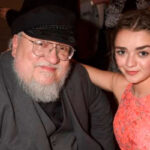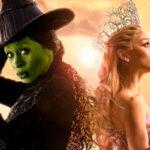

“Back to the Future” is much more than a movie; it’s a pop culture masterpiece that transcends generations. Released in 1985, directed by Robert Zemeckis, and starring Michael J. Fox and Christopher Lloyd, the film has become an icon of science fiction and adventure. The storyline, blending time travel, friendship, and action, has captivated audiences since its release, amassing a legion of fans worldwide. Behind the scenes, there are a plethora of fascinating tidbits that add layers of depth to the cinematic experience. From production challenges to hidden details within scenes, every aspect of “Back to the Future” is permeated by a fascination that continues to enchant and intrigue viewers of all ages.
1 – REJECTED OVER 40 TIMES
Like many cinema classics, the approval of “Back to the Future” required remarkable persistence from its creators. To be precise, it took 45 attempts before the project got the green light. Prior to that, investors rejected the idea 44 times, deeming it not bold enough to rival the teenage films of the time. It’s worth noting that Hollywood was immersed in an era of youth productions filled with crude humor and innuendos. They believed that without this appeal, the film wouldn’t be well-received by audiences.
2 – ACTOR CHANGE
Initially, the role of Marty McFly was offered to Michael J. Fox, but due to scheduling conflicts with his sitcom “Family Ties,” he had to drop out of the project. To avoid delays in filming, director Zemeckis opted for a new casting choice. Eric Stoltz was then selected and worked with the team for two months. However, both the actor and the director felt that something wasn’t working as expected. Despite having already filmed some of the key scenes, the decision was made to once again pursue Michael J. Fox, who agreed to return despite facing an exhausting schedule to juggle both productions. These two months with Stoltz represented a cost of approximately $3 million for the film’s budget. However, the result was remarkable, as Michael delivered a memorable performance as Marty, becoming immortalized as the character.
3 – ACREENWRITER DREW FROM PERSONAL EXPERIENCE
Bob Gale, the screenwriter of “Back to the Future,” persevered tirelessly for the film’s approval, driven by a unique personal experience. The inspiration for the storyline came when he was flipping through his own father’s high school yearbook, imagining what it would be like if they had lived in the same era. This sparked the question: would they be friends? From this inquiry, the premise of the film took shape, and the rest is history. In several interviews, Gale expressed his desire to time travel, sharing that if given the opportunity, the first thing he would do is seek out his father and try to establish a friendship with his younger self.
4 – PLOT HOLE? SCREENWRITER EXPLAINS
Despite being revered by fans, “Back to the Future” doesn’t escape traditional criticism, with one of the most famous being a gap in the ending’s script. How could Marty, who went back in time and played a crucial role in his parents’ encounter, becoming a central figure in the family’s formation, have his parents not suspected anything when they saw their son grow up to become identical to “Calvin Klein”? In 2020, Bob Gale finally addressed this issue, explaining that Marty and his parents had very brief encounters over the course of a week. For those who find this situation absurd, Gale challenged them to remember everyone they talked to during school. Furthermore, without a single photo of “Calvin,” it would be extremely difficult to recall someone who disappeared completely from their lives in the three decades that followed.
5 – THE NOSTALGIC TIME MACHINE
Following the resounding success of the film, John DeLorean, the creator of the DMC, sent a letter of gratitude to Robert Zemeckis and Bob Gale for immortalizing his car in cinema history. For DeLorean, the movie was significant as the production of the car faced numerous issues, resulting in automotive jokes around its name. One of the main hurdles was the nearly decade-long delay in delivering the first fleet. Another notable issue, which became a joke in the franchise, was the DeLorean’s performance. With a steel chassis and a not-so-powerful engine, it took about 10 seconds to reach 100 km/h. Therefore, when Dr. Brown mentions the need to reach 88 miles per hour (approximately 141 km/h), it wasn’t a simple task for a DeLorean.
6 – KIT TO HAVE A DELORIAN LIKE IN THE MOVIE
The success of the film and the DeLorean was so striking that a “upgrade kit” was released for DMC-12 owners to customize their cars to resemble even more the iconic vehicle from the movie. While it didn’t grant the ability to time travel, this kit gave the car that distinctive and stylish look conceived by Dr. Brown.
7 – THE SKATEBOARDER
One of the iconic scenes from the first film is Marty’s chase through the town square, where he ends up “inventing” the skateboard. For years, there was a rumor that Michael J. Fox needed lessons to learn how to skateboard, but the truth is he already had skill and talent in the sport. However, as in any film production, stunt doubles were used in more elaborate scenes to prevent any accidents that could delay filming. This moment was crucial in solidifying “Back to the Future” as a major youth film of its time. Marty’s role was so impactful for Michael that, even today, in various parts of the world, people recognize him as “Marty McFly” on the streets.
8 – FAN PRESIDENT
Another memorable moment from the film occurs when Dr. Brown questions Marty about the future, and Marty mentions that Ronald Reagan is the president. Dr. Brown’s genuinely surprised and funny reaction to learning that an actor is in charge of the country resulted in a hilarious scene. So amusing was the reaction that Ronald Reagan himself had a fit of laughter. He was so delighted with the scene that he requested the projectionist to stop the film and play it again.
9 – OSCAR AWARDS
The film won the award for Best Sound Effects, however, it also received nominations in the categories of Best Original Screenplay, Best Sound Mixing, and Best Song, the latter for the song “The Power of Love.”
10 – SUCCESS
The film had a budget of 19 million and achieved an incredible box office of 383 million dollars! Wow!!!
“Back to the Future” remains much more than just a movie; it’s a cultural landmark that transcends generations. Its trivia takes us behind the scenes of a production filled with challenges and memorable moments. From the creators’ persistence to the details that marked the journey of the DeLorean, every aspect of the film enchants us and makes us appreciate it even more. The passion of the actors, the care with the special effects, and the brilliance of the screenplay all contributed to making it a timeless classic. Even decades after its release, “Back to the Future” continues to captivate new audiences and delight those who grew up under its influence. It’s a journey through time that leaves us in awe, making us believe that somehow, the future can always be improved.








